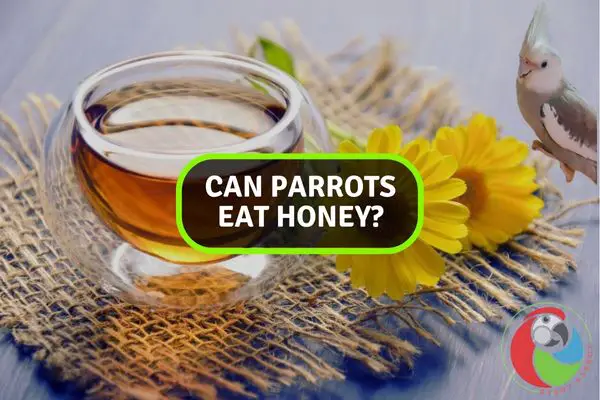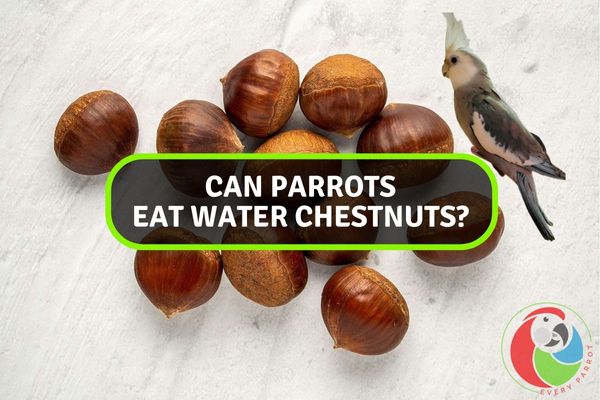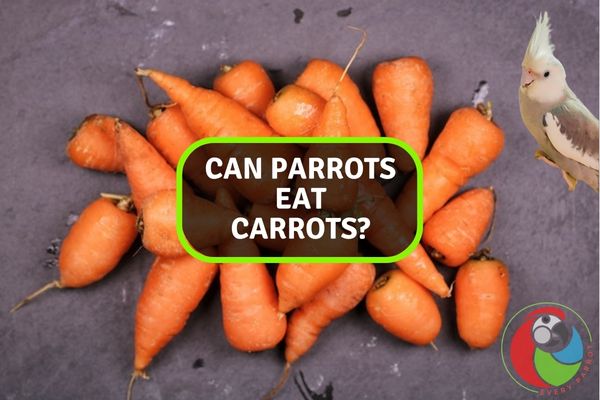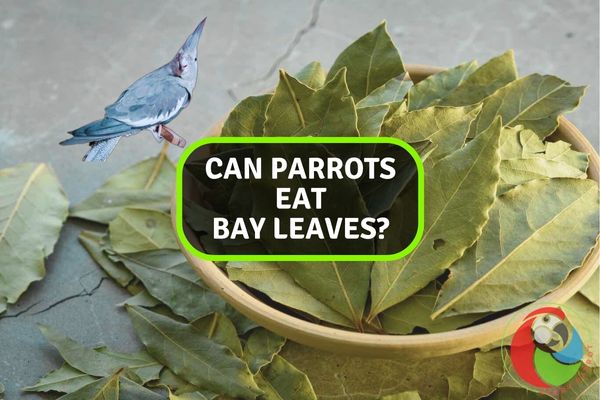Parrots Diet And Foods: What Do Parrots Eat?
Welcome to our blog site dedicated to unraveling the colorful world of parrot nutrition: “Parrots Diet And Foods: What Do Parrots Eat.” As avian enthusiasts and passionate caretakers, we understand the paramount significance of providing our feathered companions with a well-balanced and wholesome diet.
In this comprehensive blog, we delve into the intricate details of a parrot’s dietary needs, exploring the diverse array of foods that cater to their nutritional requirements. From the lush rainforests to our cozy homes, parrots exhibit a penchant for a variety of foods, each contributing to their vitality and longevity.
We aim to guide you through this culinary journey, discussing not only the fruits, vegetables, nuts, and seeds that form their diet but also the potential hazards of incorrect feeding practices.
Types Of Foods Parrots Consume
Parrot’s diets vary across species, with a foundation of fruits like apples, berries, and melons, providing essential vitamins and antioxidants. Nutrient-rich vegetables such as carrots, spinach, and bell peppers also play a crucial role. Also, parrots consume nuts and seeds, which offer healthy fats and proteins.
Some species lean towards a more protein-focused diet, incorporating insects and even small prey. The intriguing dietary preferences of parrots highlight their adaptability to different environments and underscore the importance of a well-rounded, species-specific diet for their overall well-being.
Fruits And Berries
- Olives
- Lychee
- Apricots
- Nectarines
- Tamarind
- Apples
- Gooseberries
- Elderberries
- Goji Berries
- Mulberries
- Lemons
- Persimmons
- Butternut Squash
- Oranges
- Grapefruit
- Kiwi
- Sapodilla
- Bananas
- Cantaloupe
- Coconut
- Prickly Pear
- Guava
- Papaya
- Blackberries
- Raspberries
- Cherries
- Pomelo
- Durian
- Dragon Fruit
- Jackfruit
- Starfruit
- Dates
- Mango
- Longan
- Pears
- Cranberries
- Dried Fruit
- Raisins
- Blueberries
- Celery
- Figs
- Peaches
- Pineapple
- Pomegranate
- Strawberries
- Watermelon
- Pumpkin
- Plums
Nuts And Seeds
- Almonds
- Walnuts
- Water Chestnuts
- Pine Nuts
- Hazelnuts
- Cashews
- Peanuts
- Chickpeas
- Pecans
- Pistachios
- Flax Seeds
- Chia Seeds
- Sunflower Seeds
- Sesame Seeds
Vegetables And Greens
- Cilantro
- Carrots
- Garlic
- Jicama
- Cauliflower
- Seaweed
- Ginger
- Edamame
- Eggplant
- Beets
- Radishes
- Lettuce
- Bok Choy
- Parsley
- Potatoes
- Tomato
- Aloe Vera
- Yellow Squash
- Onions
- Avocados
- Green Beans
- Fennel
- Zucchini
- Watercress
- Kale
- Lemongrass
- Oregano
- Cabbage
- Frozen Vegetables
- Asparagus
- Broccoli
- Herbs
- Spinach
- Brussel Sprouts
- Rutabaga
- Cucumbers
- Swiss Chard
- Arugula
Insects And Small Prey
- Ants
- Mosquitoes
- Crickets
- Stink Bugs
- Spiders
- Bees
- Grasshoppers
- Cockroaches
- Butterflies
- Caterpillars
- Chameleons
- Dried Mealworms
What kinds of foods do parrots consume in the wild?
Parrots have quite an eclectic taste when it comes to their natural diet. Out there in the wild, where they spread their wings in lush rainforests, arid deserts, and other exotic locales, these feathery companions enjoy a menu that mirrors the diversity of their habitats.
A Feast of Fruits
One might say that parrots have a sweet tooth, or rather, beak. Fruits, juicy and ripe, are a staple in their diet. These avian adventurers have a penchant for digging into a delightful array of tropical fruits, such as mangoes, papayas, and figs. These vibrant bites not only offer a burst of natural sugars but also provide essential vitamins to keep those feathers shiny and healthy.
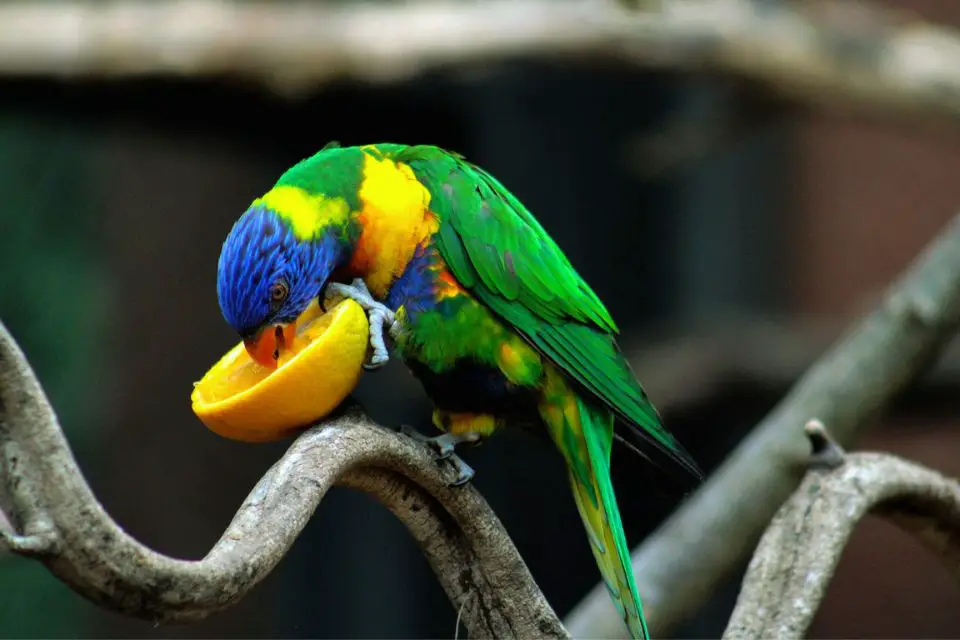
Nuts and Seeds – Nature’s Energy Packs
Just like we humans rely on a hearty breakfast to kickstart our day, parrots turn to nuts and seeds for a hearty helping of energy. From sunflower seeds to almonds, these crunchy morsels provide a good dose of healthy fats, proteins, and essential nutrients.
It’s like their very own power-packed trail mix, helping them keep their energy levels up as they explore their vibrant habitats.
Verdant Vegetables
Alongside their fruity and nutty escapades, parrots also indulge in a variety of veggies. Leafy greens like kale and spinach are on their culinary radar, offering a wholesome dose of vitamins and minerals.
Brightly colored vegetables, rich in antioxidants, make their appearance too. Peppers and carrots add a splash of color to the parrot’s palette while keeping their immune systems robust.
Dipping into Flowers
Parrots are not ones to shy away from adding a dash of floral flavor to their diet. They might be seen delicately plucking petals and sipping nectar from blossoms. This isn’t just a gourmet delight; it also plays a crucial role in their pollination efforts, contributing to the ecosystem’s harmony in their own distinctive way.
Nature’s Buffet – Adaptation to Environment
What’s truly fascinating is how parrots adapt their diets to their surroundings. Those in rainforests might savor tropical fruits and vegetation, while their desert-dwelling counterparts seek out hardy cacti and succulents to quench their thirst and nourish their bodies. This adaptability speaks volumes about their resilience as they thrive in a variety of conditions.
The Social Aspect – Dining in Flocks
Dining isn’t just a solo activity for these vibrant birds; it’s a social affair. Parrots often gather in flocks to share in the bounty of nature. They engage in communal feasting, not only enjoying the food but also reinforcing social bonds within their feathered community.
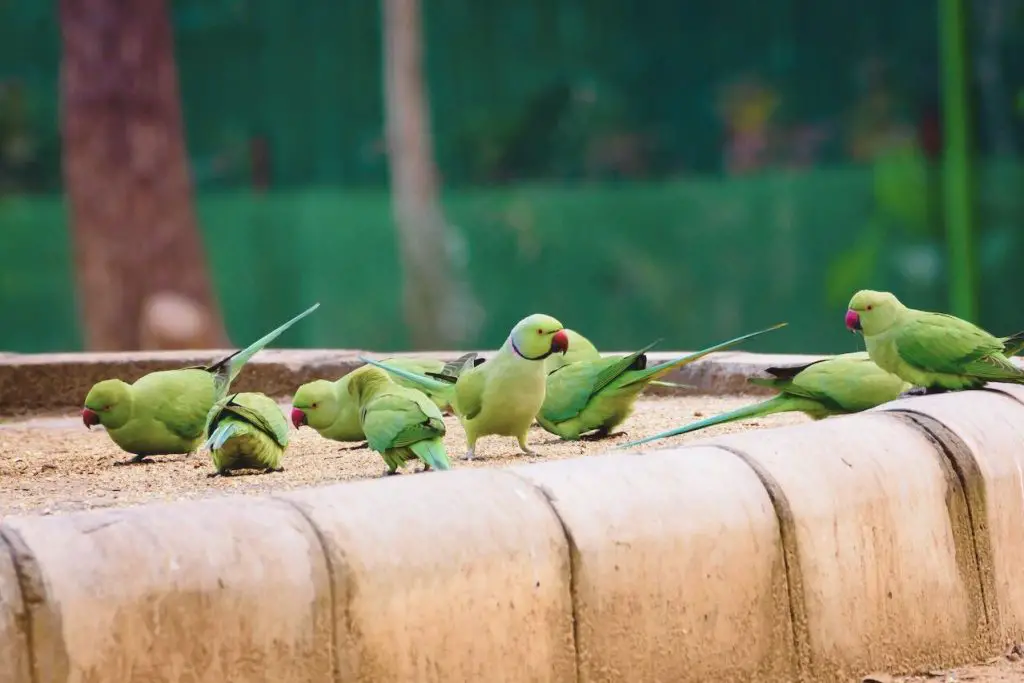
How Does A Parrot Eat?
let’s dive into the fascinating world of parrot munching! These colorful avian buddies have a unique way of chowing down that’s as intriguing as it is entertaining.
Beak Magic: The Opening Act When it comes to starting the mealtime fiesta, a parrot’s beak takes center stage. With its strong, curved, and slightly hooked beak, our avian buddy is like a culinary superhero. This specialized tool acts as a combo of fork, knife, and even a tiny set of hands, enabling the parrot to manipulate and grasp various food items.
Bite-sized Brilliance Ever noticed how parrots go for those perfectly-sized nibbles? Well, that’s not just a coincidence. These clever creatures have mastered the art of breaking down food into manageable bites. With their beak’s precision and dexterity, they can tear, cut, and nibble on various textures without much ado.
Beakwork Ballet: The Munching Motion Now, here comes the mesmerizing part – the actual munching motion. It’s a choreographed dance of jaw muscles and beak movements. The parrot employs a rhythmic motion to grind the food particles into smaller, more digestible bits. Think of it like a parrot-sized food processor – efficient and captivating to watch.
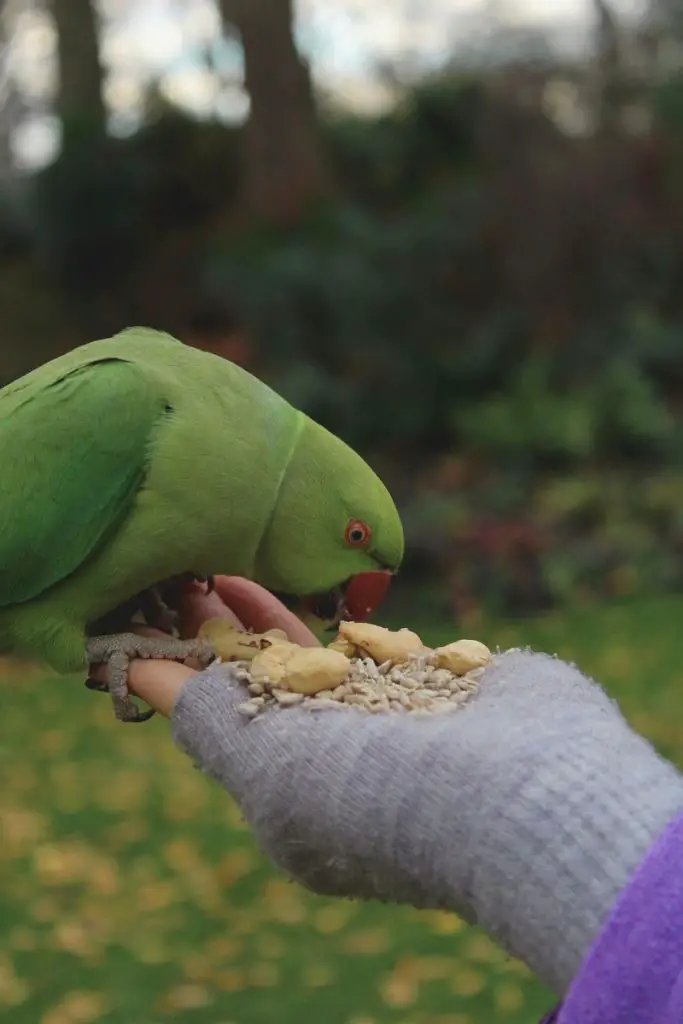
Saliva Sorcery: The Moistening Touch Unlike humans, parrots don’t produce saliva in their mouths to aid in digestion. So, to prevent a dry dining experience, they add a touch of moisture before swallowing. How? They employ the unique ability to raise their food to their beak, moistening it with a bit of regurgitated liquid. Sounds quirky, but it’s their way of making sure things go down smoothly.
Gulp it Down: The Swallowing Symphony After all the chewing, grinding, and moistening, it’s time for the final act: swallowing. The parrot uses its well-coordinated muscles to guide the food from its beak, down the throat, and into its stomach. And just like that, the culinary masterpiece is on its way to being processed and transformed into energy.
Gastric Grandeur: Digestion Unleashed Once the food reaches the stomach, it’s time for some behind-the-scenes magic. The parrot’s stomach, unlike ours, is equipped to handle a variety of foods, from seeds to fruits. With the help of powerful digestive enzymes, the nutrients are broken down, and the body begins its nutrient-absorption extravaganza.
How Can You Feed Your Pet Parrot?
Feeding your beloved pet parrot isn’t just about filling a dish; it’s about creating a nourishing, exciting culinary experience. Parrots, with their vibrant personalities and diverse appetites, thrive on a diet that mirrors their wild foraging habits. Let’s dive into how you can provide a wholesome and enriching diet for your feathered friend.
Incorporating Fruits and Vegetables: Burst of Colorful Nutrition
Parrots adore the natural sweetness of fruits and the crunch of vegetables. These nutrient-packed goodies are more than just treats; they’re an essential part of their diet. opt for a rainbow of options, including oranges, berries, apples, carrots, broccoli, and leafy greens.
Not only do these vibrant foods provide vitamins and minerals, but they also keep your parrot mentally stimulated as they explore different flavors and textures.
Safe Options and Portions: Putting Safety First
While a wide range of fruits and vegetables can grace your parrot’s plate, some human foods are off-limits. Say no to avocado, chocolate, caffeine, and onions, as these can be harmful to your feathered friend. And remember, moderation is key. Aim for a balance between fruits, veggies, and other dietary components to prevent overindulgence.
Food Variety and Rotation: Spice Up the Menu
Imagine eating the same meal every day – it’d get boring quickly, right? Well, your parrot feels the same way. Keep their interest piqued by offering a rotating selection of fruits and veggies. This not only keeps their taste buds excited but also helps ensure they receive a broad spectrum of nutrients.
Homemade Parrot Mash and Chop Recipes: DIY Delicacies
Crafting your own parrot mash and chop concoctions is a rewarding endeavor. Start with a base of nutrient-rich cooked grains like quinoa or brown rice. Toss in finely chopped veggies such as bell peppers, zucchini, and sweet potatoes. For an extra pop of nutrition, mix in leafy greens like kale or collard greens. Don’t forget a sprinkle of parrot-safe herbs like basil or parsley for added flavor.
Here’s a simple recipe to get you started:
Vibrant Veggie Mash Ingredients:
- Cooked quinoa or brown rice
- Chopped carrots, bell peppers, and broccoli
- Chopped leafy greens
- Fresh herbs
Instructions:
- Cook the grains according to package instructions and let them cool.
- Mix in the chopped vegetables and leafy greens.
- Add a sprinkle of fresh herbs for flavor.
- Serve a small portion to your parrot, and refrigerate the rest for later.
What Parrots Cannot Eat?
Feeding your feathered friends is a delightful part of having parrots as pets, but it’s crucial to understand that not all foods are suitable for these colorful companions. Parrots have unique dietary needs, and there are specific foods you should steer clear of to keep them healthy and happy.
Foods to Avoid:
Avocado: While humans love guacamole, avocados are a big no-no for parrots. They contain a substance called persin, which is toxic to birds. Consumption can lead to respiratory distress and even death.
Chocolate: As much as we adore chocolate, it’s a strict “do not feed” item for parrots. Chocolate contains theobromine, a compound that is poisonous to birds and can cause vomiting, diarrhea, and even cardiac issues.
Caffeine: Your morning cup of coffee is not meant to be shared with parrots. Caffeine can negatively affect the nervous system, leading to hyperactivity, tremors, and in severe cases, death.
Onions and Garlic: These kitchen staples might add flavor to our meals, but they contain compounds that can damage a parrot’s red blood cells, leading to anemia.
Salty Foods: Just like in humans, excessive salt is harmful to parrots. High sodium levels can lead to dehydration and kidney problems.
Toxic Foods for Parrots:
Grapes and Raisins: While not entirely understood, grapes and raisins have been linked to kidney failure in some parrots. It’s best to play it safe and avoid them altogether.
Fruit Pits and Seeds: Many fruit seeds, such as apple seeds and cherry pits, contain cyanide. Even though the flesh of the fruit is safe, the seeds and pits should be removed before feeding.
Rhubarb: This tangy vegetable might make a great pie, but its leaves and stems contain oxalic acid, which is toxic to parrots.
High-Fat and Sugary Human Foods:
Junk Food: Parrots might be curious, but that doesn’t mean they should munch on your potato chips or sugary treats. High-fat and sugary foods can lead to obesity, liver problems, and a host of other health issues.
Dairy Products: While parrots don’t naturally consume dairy in the wild, many are lactose intolerant. Feeding them dairy products can result in digestive upset.
Human Meat: Avoid sharing your carnivorous dishes with your parrot. They don’t have the same dietary needs as humans and can’t digest meat as effectively.
Alcohol: It goes without saying, but alcohol is a definite no-go for parrots. Their small size makes even a small amount of alcohol extremely dangerous.
The Contribution of Different Foods to Nutritional Requisites
When it comes to the vibrant world of parrot care, there’s no denying that nutrition takes center stage. Just like us humans, these colorful avian companions have their own set of dietary requirements that directly impact their health, vitality, and overall well-being. From the essential macronutrients to the micronutrients and vitamins that fuel their feathers and playful personalities, let’s dive into the fascinating realm of parrot nutrition.
Fueling Vitality: Macronutrients for Parrot Health
Parrots, with their stunning plumage and remarkable intelligence, need a well-balanced diet rich in macronutrients. These building blocks of nutrition include proteins, carbohydrates, and fats, all of which are crucial for their growth, energy, and maintaining their optimal health.
- Proteins: Much like us hitting the gym, parrots need their dose of proteins to stay strong and feathered fabulous. Proteins are the cornerstone for muscle development, cell repair, and maintaining the structural integrity of feathers. Sources like lean meats, eggs, legumes, and even high-quality pellets cater to their protein requirements.
- Carbohydrates: Carbs provide the energy needed for those boisterous squawks and playful antics. Whole grains, vegetables, and fruits serve as excellent sources of complex carbohydrates, offering a sustained release of energy throughout the day.
- Fats: Don’t shy away from fats; they’re the powerhouses behind nutrient absorption, organ protection, and maintaining a glossy plumage. Nuts, seeds, and healthy oils provide the essential fats parrots need for their metabolic processes.
Micronutrients And Vitamins Required
Parrots have their unique set of micronutrients and vitamin needs, which play a pivotal role in ensuring their vitality and longevity. Let’s delve into the vibrant world of parrot nutrition and explore the key players: Vitamin A, Vitamin C, Calcium, Iron, and Potassium.
Vitamin A: A Feast for the Eyes
Parrots, with their kaleidoscopic plumage and sharp eyesight, owe a great deal to Vitamin A. This vitamin isn’t just about aesthetics; it’s a fundamental nutrient for maintaining excellent vision, vibrant feathers, and a robust immune system.
To infuse your parrot’s diet with Vitamin A, look no further than carrots, sweet potatoes, and dark leafy greens. These colorful delights aren’t just a treat for the eyes but also a vital ingredient in supporting your parrot’s overall well-being.
Vitamin C: The Immune Booster
Vitamin C isn’t just for combating colds in humans; it plays a similar role in our avian friends. This immune-boosting vitamin aids parrots in warding off infections, promoting tissue repair, and absorbing other essential nutrients.
Tangy fruits like oranges, strawberries, and kiwi make for fantastic sources of Vitamin C. Remember, just a sprinkle of these juicy gems can go a long way in bolstering your parrot’s resilience against various health challenges.
Calcium: The Bone Builder
Strong bones are the backbone of an active and lively parrot. Calcium, the mineral responsible for building and maintaining skeletal health, is non-negotiable in a parrot’s diet. Fortified pellets, alongside leafy greens such as kale and collard greens, contribute significantly to calcium intake.
Proper calcium levels keep parrots agile and support eggshell formation in breeding females, ensuring the next generation starts off on the right foot.
Iron: The Oxygen Carrier
The significance of iron in transporting oxygen within the body is undeniable. Parrots require iron for energy production and overall metabolic functions. While it’s not a spotlight nutrient, its role is crucial.
Leafy greens, legumes, and fortified cereals can be effective iron sources. Balancing iron intake is vital, as too little can lead to anemia, while excess can cause toxicity—a delicate equilibrium to be mindful of.
Potassium: Electrolyte Balance
Maintaining fluid balance, muscle contractions, and nerve functions—potassium wears multiple hats in keeping parrots hale and hearty. Bananas, melons, and cooked sweet potatoes are excellent sources of this essential mineral.
Ensuring an adequate potassium supply means supporting heart health and keeping muscle coordination in the groove.
Commercial Parrot Diets: The Pellet Parade and Seed Symphony
When feeding pet parrots, choosing between pellet and seed diets is crucial. Pellets offer balanced nutrition, while seeds provide variety but may lack essential nutrients. A combination can strike the right balance. Consult an avian veterinarian for tailored advice.
Pelleted Diets: Nutrient-Rich Nuggets of Goodness
Pelleted diets are like little nutrient-rich nuggets designed to provide a balanced meal in every bite. They’re like a buffet of vitamins, minerals, and macronutrients, all rolled into one. The biggest benefit? No picking and choosing – your parrot gets a complete meal. Plus, they’re less wasteful than seed mixes, so you won’t find as many crumbs sprinkled around the cage.
Seed Mixes: Nature’s Snack Packs with Caveats
Seed mixes have that natural allure, mimicking what parrots might munch on in the wild. They’re like little snack packs from nature’s pantry. But here’s the catch – they can be a bit one-sided. Parrots tend to pick out their favorites, leading to potential nutrient imbalances. It’s like a kid picking out the marshmallows from a bowl of cereal – tasty, but not exactly balanced.
Parrots Feeding Routine
As a responsible parrot owner, ensuring your vibrant feathered companion’s nutritional needs are met is paramount. Let’s dive into the art of parrot feeding and establish a routine that caters to their well-being, vitality, and joy.
Feeding Guidelines: Nutritional Goodness
When it comes to feeding your parrot, think variety! Just like us, parrots thrive on a diverse diet. A well-rounded menu might include pellets, fresh fruits, vegetables, whole grains, and the occasional healthy treat. This mix ensures they get the vitamins, minerals, and energy they need to show off those gorgeous feathers and keep their minds sharp.
Recommended Feeding Frequency and Portions: Balancing Act
Portion control matters. The size of your parrot and its activity level determine how much it should eat. Generally, a small-sized parrot might need around 1-3 tablespoons of food daily, while larger parrots may require 1/4 to 1/2 cup. Divide this into two meals – one in the morning and another in the early evening.
Keep an eye on the quantities your parrot finishes, and adjust if needed. Remember, parrots can be picky eaters too, so don’t be surprised if they nibble more on one item than another.
Monitoring Weight and Body Condition: The Scale of Health
Just like our bathroom scales, monitoring your parrot’s weight helps you gauge its health. Regular weigh-ins can catch any sudden weight loss or gain, which might signal an underlying issue.
You’re not aiming for the exact same number every time; a slight fluctuation is normal. Alongside weight, observe your parrot’s overall body condition. You’re looking for feathers that are sleek and vibrant, eyes that are bright, and energy levels that match its usual behavior.
Adjusting Diet Based on Age, Activity, and Health: Tailoring Nutrition
Parrots, like us, have changing needs as they age. Young parrots are still growing, so their diet may require extra protein and calcium. Active parrots – the ones that can’t resist flying laps around the living room – may need more calories, whereas those who enjoy a cozy perch might need fewer.
Health conditions also play a role. If your parrot is recovering from an illness, your avian vet might suggest specific dietary adjustments to aid the healing process.
Which drinks are safe and appropriate for giving to parrots?
Just like us, parrots need a steady supply of water to stay healthy and happy. Not only does hydration play a vital role in their overall well-being, but it also contributes to their feathered finesse and grooming. So, let’s chat about the drinks that can keep your parrot’s spirits high and feathers shining!
The Essential Elixir: Fresh Water
Water, the elixir of life, is a must for our feathered pals. It’s not just a liquid they sip – it’s a source of vitality. Always make sure to provide a clean bowl of fresh water every day. Stagnant or dirty water can quickly become a breeding ground for harmful bacteria, which can put your parrot’s health at risk.
Imagine how you’d feel if you had to gulp down a glass of tepid water! So, treat your parrot to the same standard – fresh and cool water, ready to quench their thirst whenever they need it.
Water-Rich Foods: The Hydration Heroes
Remember, hydration isn’t just about the water bowl. Water-rich foods can be real heroes in keeping your parrot hydrated. Think about it – fruits like watermelon, oranges, cucumbers, and berries aren’t just a tasty treat, but they’re also loaded with water content.
Incorporating these colorful bites into your parrot’s diet not only adds variety but also contributes to their daily water intake. It’s like a refreshing snack that’s as good for them as it is for us.
Grooming Galore: Water and Feathers
Now, let’s dive into the grooming aspect – something our parrots take very seriously. Have you ever noticed your parrot having a delightful splash in their water bowl? That’s not just play – it’s their way of getting clean and maintaining those glossy feathers.
You see, water serves a dual purpose here. While it hydrates them from the inside, it also assists in the outside cleanup. Clean feathers aren’t just about looking good; they’re crucial for insulation and flight performance. So, by providing clean water, you’re indirectly ensuring that your parrot’s feathers stay in tip-top condition.
How do you know if your parrot’s dietary needs are being met adequately?
Keeping your feathered friend healthy and happy is a top priority, and one of the key factors in achieving this is ensuring they’re getting the right diet. While parrots can be quirky and particular eaters, there are some signs and guidelines that can help you identify whether your parrot’s diet is on point.
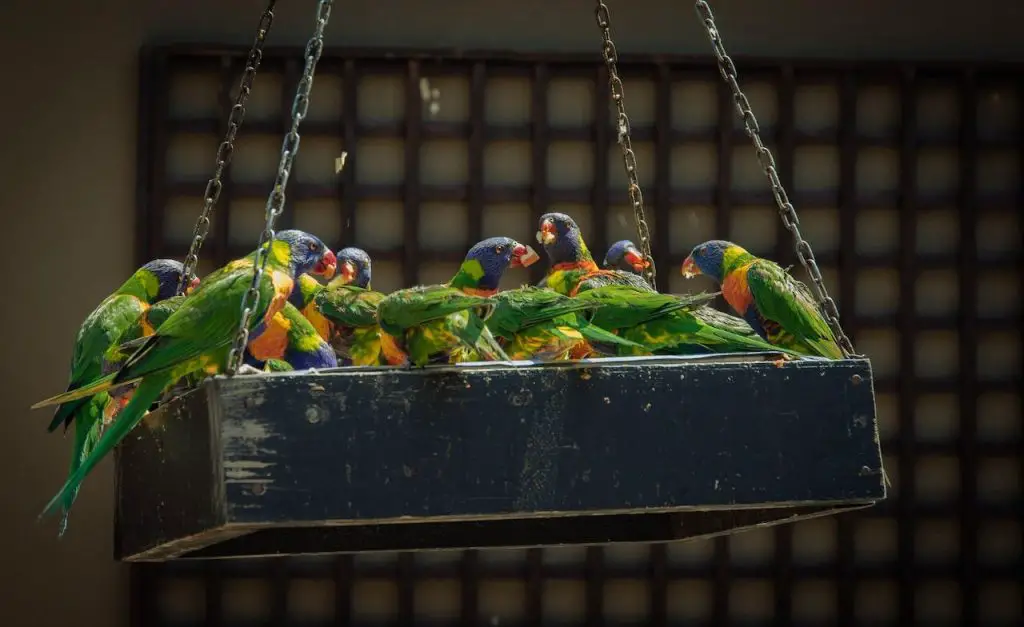
Vibrant Feathers and Clear Eyes: The Tell-Tale Signs
When it comes to assessing your parrot’s diet, the first things to look for are vibrant feathers and clear eyes. A parrot with a balanced and nourishing diet will often sport feathers that are glossy, rich in color, and free from any signs of excessive molting or plucking. Similarly, their eyes should be clear, bright, and free from any discharge.
Energy and Playfulness: Gauging Vitality
A parrot that’s enjoying a proper diet will be full of energy and playfulness. If your feathered companion is active, engages in various activities, and shows interest in their surroundings, it’s a good sign that they’re getting the nutrients they need. On the flip side, a lethargic or listless parrot might indicate that something’s off with their diet.
Balancing the Seed Conundrum: Seeds vs. Veggies
Now, let’s tackle the classic debate of seeds versus veggies. While seeds are a staple in many parrot diets, relying solely on them might not be the best approach. Parrots need a mix of nutrients that go beyond what seeds alone can provide. Veggies, fruits, and even some whole grains should be on the menu to ensure a well-rounded diet.
Exploring the Rainbow: A Variety of Colors and Textures
Variety is the spice of life, even for your parrot’s diet. Introduce a range of colorful fruits and veggies to their meals. Different colors often signify different vitamins and minerals, so aim for a rainbow on their plate. Crunchy, soft, and leafy textures not only keep your parrot engaged but also offer a spectrum of nutrients.
Consulting the Avian Expert: Veterinarian Visits
Remember, when in doubt, consult an avian veterinarian. They’re the true experts when it comes to your parrot’s health and diet. Regular check-ups and consultations can help you fine-tune your parrot’s dietary needs based on their individual preferences and health requirements.
What do Baby parrots consume for nourishment?
When it comes to these adorable little bundles of feathers, the curious baby parrots, their dining preferences might just surprise you. So, let’s dive right into what makes their tiny taste buds tingle with delight!

Early Bird Food Adventures: A Peek into the Menu
Picture this: those pint-sized parrots, fresh out of their shells, are just about ready to embark on their culinary journey. Now, the first thing on their menu might sound pretty basic, but trust me, it’s a vital start.
We’re talking about a specially formulated baby parrot formula. This mix is packed with all the essential nutrients these growing munchkins need – stuff like protein, vitamins, and minerals. It’s like a superfood shake for baby birds!
The Transition Phase: Graduating to Real Food
As these little fluffballs grow, their food adventures start to get a bit more interesting. You’ll notice they start to show interest in nibbling on solid stuff. This is where the good ol’ baby bird formula starts to mingle with a buffet of fresh delights.
Fruits and veggies take center stage here. Think colorful bites like apple slices, carrot shavings, and even a bit of broccoli. It’s like they’re turning their beaks into miniature salad tongs!
Feathered Foodies: Exploring a Varied Diet
As baby parrots continue to spread their wings, their palates become even more adventurous. This is the phase where you can introduce them to a wider range of foods, mimicking what they might munch on in the wild.
Time to break out the grains and seeds – a mix that’s designed to mimic their natural foraging habits. And hey, don’t forget a sprinkle of nuts! Nuts are like little treasures for these parrot explorers.
Getting that Protein Punch: Sources of Protein for Growing Parrots
Alright, let’s talk protein. These growing parrots need it, and you’ve got options. Cooked beans are a fantastic source, and they add a bit of texture to the mealtime experience. And let’s not overlook the importance of lean proteins like cooked chicken or hard-boiled eggs. It’s like these baby birds are gearing up for a mini-Olympics of wing-flapping and chirping!
Quenching the Thirst: Hydration Matters
You know what else is a key player in the grand food symphony? Water! Hydration is crucial for these little munchers. Keep a fresh supply of water available at all times. It’s like their own little water cooler, except they won’t be discussing the latest parrot gossip.
What Do Parrots Eat?
Conclusion
Understanding the dietary needs of parrots is vital for their overall health and well-being. These vibrant and intelligent birds thrive on a diverse and balanced diet that replicates their natural foraging habits. Incorporating a variety of fresh fruits, vegetables, high-quality pellets, nuts, and seeds can help provide the essential nutrients, vitamins, and minerals that parrots require.
While catering to their preferences, it’s important to avoid offering foods that are toxic or unhealthy for them. By investing time and effort into researching and offering a suitable diet, parrot owners can foster strong bonds with their feathered companions and ensure their longevity.
Remember, a proper diet isn’t just about nutrition – it’s a way to express love and care for these captivating creatures that bring joy to our lives.


